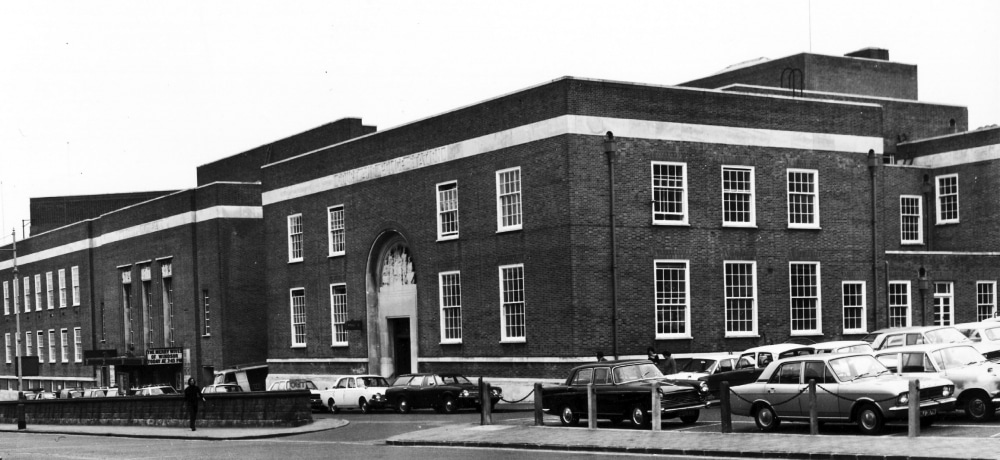The police station in Tunbridge Wells was built in 1939. Along with the Assembly Hall, it was the only part of the civic complex to be constructed before the war, following a design competition held by the town in 1934.
The ground floor made up the working police station with a charge room, enquiry room, telephone room, a parade and instruction room, six cells and a courtyard for prisoner exercise.
Meanwhile, the Magistrates’ Court occupied the first floor.
There were different staircases up into the court room, depending on whether you were a prisoner who went directly from the cells into the dock…
… or a free member of society who could travel the ceremonial route of the main staircase with its finely moulded handrails, or the two subsidiary staircases, with their streamlined 1930s Art Deco balustrades.
Kent Police Curator Paul Upton pointed to architectural similarities with the Tunbridge Wells Police Station which later became Kent Police Headquarters – at Sutton Road in Maidstone – and Dover Police Station, both constructed in the same period.
“They have the same style and the same feel – certainly the brick facades and sash windows and the square, almost Regency style. Dover has a similar classical style.
“At the outbreak of World War II, there were nine of these borough police stations [in Kent]. But on the 1st of April 1943, there was a temporary but compulsory amalgamation into Kent County Constabulary.
“The emergency wartime measure was made permanent in 1947, after the Police Act (1946), meaning that Kent remained the police authority,” he added.
The building in Tunbridge Wells remained a working police station, but the Magistrates’ Court closed in 2000.
COURTHOUSE: Magistrates no longer sit in the station’s courtroom
Today the courtroom sits empty, although it recently played host to a live theatre production.
After Tonbridge police station was built, it eventually took control of Tunbridge Wells rosters, as well as some of its officers.
Tonbridge became the station to take prisoners into custody, leaving the Tunbridge Wells cells redundant. Yet there were some initiatives to re-localise policing, such as the introduction in 2002 of Police Community Support Officers (PCSOs), whose role is to be visible in the community.
Today the police station acts as a base for local police units, PCSOs, and acts as headquarters for a local domestic abuse charity.
UNLOCKED: The station’s cell block is now
used to house lockers and for storage
Police station not for sale
Police and Crime Commissioner (PCC) Matthew Scott has said Tunbridge Wells remains an ‘active’ police station and there are no plans by Kent Police to sell the building.
Despite discussions over the last ten years about redevelopment of the civic centre site, which would have included the police selling Tunbridge Wells Police Station, Mr Scott has repeatedly stressed the building will remain in police hands.
Speaking to the Times last week, he reiterated his commitment to keeping the station open in the town.
He said: “Tunbridge Wells remains an active police station, serving as a base for both officers and staff, including PCSOs.
“The front counter also remains open to the public and we allow the excellent DAVSS (Domestic Abuse Volunteer Support Services) charity use of part of the building. At this time there are no plans to change this.”
New police station photos: Emily Harding








